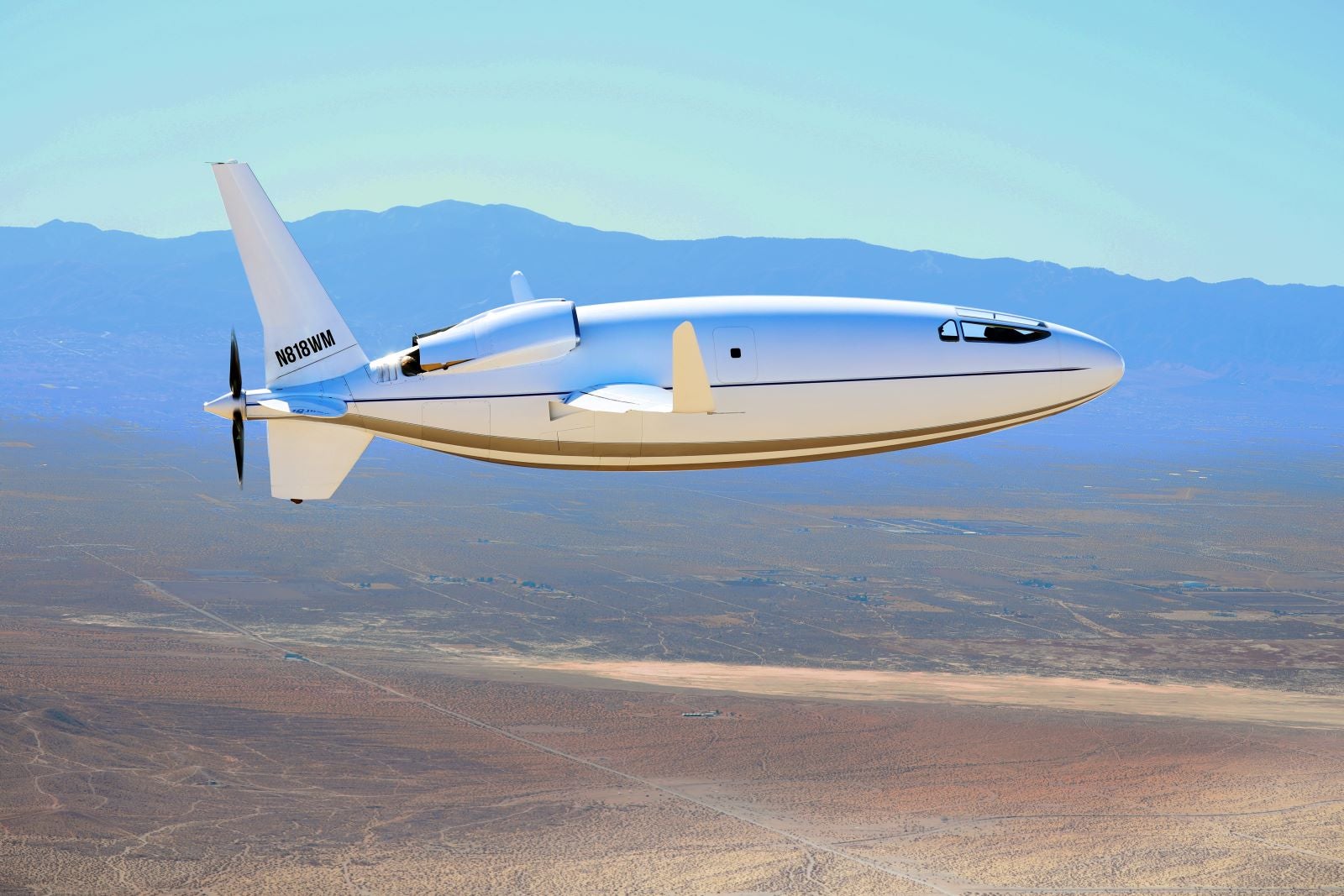Is this the world’s most fuel efficient, commercially viable aircraft right now?
That's the bold claim put forward by Otto Aviation, the American startup behind the Celera 500L, a new and genuinely revolutionary clean-sheet aircraft concept.
The world has no shortage of startups aimed at transforming the way we fly, but Otto Aviation is one that truly stands out, and not just because of the unusual airplane design it is working on. The teardrop-shaped fuselage of the Celera 500L is perhaps its most eye-catching element, but there's a lot more than just looks.
This aircraft is five to seven times cheaper to operate and that it consumes eight times less fuel than similarly-sized aircraft without compromising speed or range.
What's more, these jaw-dropping efficiency gains are not the result of some new, unproven propulsion technology. While it could potentially be fitted with an electric motor, the Celera is currently fitted with two conventional piston engines that are able to operate independently and power a single rear propeller.
For more TPG news delivered each morning to your inbox, sign up for our daily newsletter.
The aircraft's stellar aerodynamic performance can be attributed to the smart use of laminar flow, a physics principle by which different adjacent layers of air or fluid move smoothly without mixing with each other.
Related: 18 airline liveries that will catch any AvGeek's eye
Optimizing for laminar flow is what gives the Celera its peculiar shape, along with a 59% drag reduction compared to its peers.
It is not a coincidence that the founder of Otto Aviation and the mind behind this project, William Otto, Sr., learned the ropes developing missiles for the U.S. military. But the inspiration for the Celera didn't come from the sky, but rather from the sea, where some torpedo designs use laminar flow to move efficiently through the water.

Less drag means lower fuel burn, with the Celera 500L purportedly getting 18-25 miles a gallon, compared to the 2 to 3 miles a conventional jet gets. Its creators claim that Celera's emissions per person are up to 80% lower than for comparable aircraft.
How do these efficiency gains translate to dollars? Proponents of the project have calculated that the cost of operating the Celera could come down to $328 per hour. Mind you, this is the cost per aircraft, not per person! Factor in a full load of six people and it makes for a rather competitive proposition, even for distances that are in the domain of land transportation.
But far from targeting only the local and regional markets, the Celera's range of 4,500 nautical miles would enable it to link pretty much any city pair in the contiguous United States. And its planned top speed of 460 miles per hour, while still slower than a jet, compares favorably with most propeller aircraft, let alone land transportation options.
Related: These are the best places for plane spotting
Another positive side-effect of its bubble-like structure is that the Celera has a rather roomy cabin: its 6' 2" of height makes it possible for most passengers to stand up straight, providing levels of comfort more typical of mid-sized and larger executive jets.
So far, so good, right? So what's preventing aircraft based on these disruptive technologies from taking the market by storm? Getting the most out of the laminar flow effect requires some compromises in terms of materials, surfaces and shapes, which do not scale so easily.
Related: The art of designing an aircraft livery
A Celera 500L prototype has been flying since 2018, having completed over 50 test flights to date, although it still hasn't reached its top potential performance (maximum speed so far has been around 250 miles per hour). The company plans to start its certification process with the FAA this year with the goal of being in the market by 2025.
Larger models for 19 and 40 passengers are also on the drawing board, but even if these take some time to materialize, Otto Aviation is confident the economics and environmental credentials of its six-seater plane can contribute to expanding the market significantly and draw new customers to private aviation.
